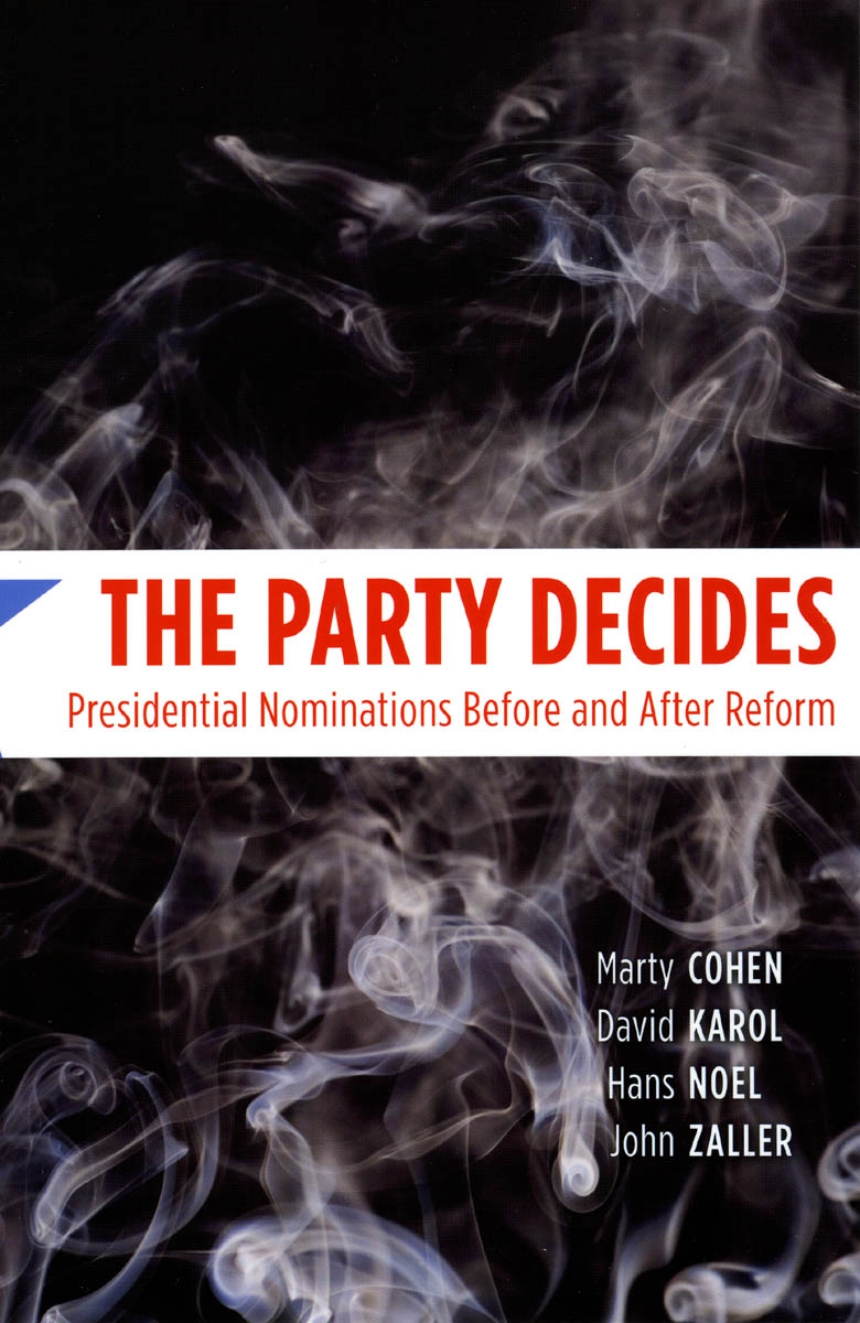The Party Decides
Presidential Nominations Before and After Reform
Throughout the contest for the 2008 Democratic presidential nomination, politicians and voters alike worried that the outcome might depend on the preferences of unelected superdelegates. This concern threw into relief the prevailing notion that—such unusually competitive cases notwithstanding—people, rather than parties, should and do control presidential nominations. But for the past several decades, The Party Decides shows, unelected insiders in both major parties have effectively selected candidates long before citizens reached the ballot box.
Tracing the evolution of presidential nominations since the 1790s, this volume demonstrates how party insiders have sought since America’s founding to control nominations as a means of getting what they want from government. Contrary to the common view that the party reforms of the 1970s gave voters more power, the authors contend that the most consequential contests remain the candidates’ fights for prominent endorsements and the support of various interest groups and state party leaders. These invisible primaries produce frontrunners long before most voters start paying attention, profoundly influencing final election outcomes and investing parties with far more nominating power than is generally recognized.
Tracing the evolution of presidential nominations since the 1790s, this volume demonstrates how party insiders have sought since America’s founding to control nominations as a means of getting what they want from government. Contrary to the common view that the party reforms of the 1970s gave voters more power, the authors contend that the most consequential contests remain the candidates’ fights for prominent endorsements and the support of various interest groups and state party leaders. These invisible primaries produce frontrunners long before most voters start paying attention, profoundly influencing final election outcomes and investing parties with far more nominating power than is generally recognized.
416 pages | 18 line drawings, 26 tables | 6 x 9 | © 2008
Chicago Studies in American Politics
Political Science: American Government and Politics, Political Behavior and Public Opinion
Reviews
Table of Contents
Acknowledgments
1 The Outrageous Nomination of Hubert Humphrey
2 Whose Parties?
3 The Creation of New Parties
4 Weak Structures, Strong Parties
5 Last Hurrahs of the Old System
Appendix to Chapter 5: State Parties in 1952
6 Mastering the Postreform System
Appendix to Chapter 6: A Closer Look at the Endorsement Data
7 The Invisible Primary: Theory and Evidence
8 Anatomy of a Conversation
Appendix to Chapter 8: Models of the Invisible Primary
9 The Voters Weigh In
Appendix to Chapter 9: Models of Delegate Share
10 Political Parties Today
Notes
References
Index
1 The Outrageous Nomination of Hubert Humphrey
2 Whose Parties?
3 The Creation of New Parties
4 Weak Structures, Strong Parties
5 Last Hurrahs of the Old System
Appendix to Chapter 5: State Parties in 1952
6 Mastering the Postreform System
Appendix to Chapter 6: A Closer Look at the Endorsement Data
7 The Invisible Primary: Theory and Evidence
8 Anatomy of a Conversation
Appendix to Chapter 8: Models of the Invisible Primary
9 The Voters Weigh In
Appendix to Chapter 9: Models of Delegate Share
10 Political Parties Today
Notes
References
Index
